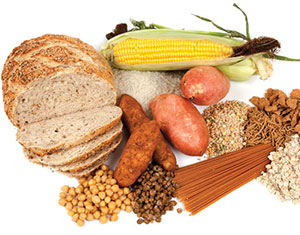
Getting your day off to a nutritious-and tasty-start.
Mother was right. Breakfast is the most important meal of the day-and this is especially true for people with diabetes. That’s because skipping breakfast can lead to problems regulating blood sugar levels throughout the day. Missing the morning meal can cause an increase in the body’s insulin response, which may result in weight gain. And extra pounds, as we all know, is something people with diabetes want to avoid. Eating a healthy breakfast can also help you control your appetite and lead to better food choices throughout the day. Nourishing your body in the morning means you won’t be famished by lunchtime, which can make it tempting to grab the most convenient and calorie-laden foods.
Study after study has proven the benefits of eating breakfast:
- A 2012 study of more than 3,500 people at the University of Minnesota School of Public Health found those who reported eating breakfast most days of the week had a 34% decreased risk of developing type 2 diabetes compared with those who never or rarely ate breakfast. They were also 43% less likely to become obese.
- A 16-year Harvard School of Public Health study that followed the breakfast habits of more than 50,000 men found those who skipped breakfast had a 21% greater risk of developing diabetes.
- The eight-year Coronary Artery Risk Development in Young Adults study found that people who ate breakfast every day were less likely to become overweight or insulin resistant compared with those who skipped breakfast often. (Insulin resistance is a condition in which glucose does not enter the cells properly.)
Yet despite the overwhelming evidence of the benefits of breakfast, more than 40% of Canadians routinely skip the morning meal, according to a survey by Ipsos-Reid. So what gives? Certainly, mornings can be a mad rush for many families and sometimes breakfast is sacrificed in the interest of time. Add to that the whole issue of trying to determine what’s best to eat for breakfast if you have diabetes, and it may seem easier just to skip it, but that’s not a good idea. Below are some timesaving strategies as well as advice on good food choices to start your day off right.
 What to eat?
What to eat?
Choose low glycemic index foods. These foods release sugar more slowly into the bloodstream and don’t produce a rapid spike in blood sugar and insulin. They include whole-grain breads; steel-cut and large-flake oats; bran cereal; fruits such as apples, citrus fruit, grapes, and pears; nuts; milk; yogurt; and soy beverages. In contrast, foods such as white bread, donuts, bagels, and many breakfast cereals have a high glycemic load. More information on the glycemic index is available on the Canadian Diabetes Association website.
Boost your fibre. Many foods with a low glycemic index are higher in fibre, such as oats, barley, psyllium husks, and fruits such as apples, cantaloupe, grapefruit, oranges, pears, and strawberries.
Pump up the protein. Adding some lean protein to your breakfast can help you feel full until lunchtime. A traditional breakfast of eggs is a good way to get your morning protein. Yogurt, milk, part-skim cheese, cottage cheese, soy beverages, and lean turkey bacon are also good protein choices.
Choose water. Skip the sugary fruit juice and opt for water instead. Coffee and tea are also good choices (just don’t load them up with cream and sugar)—and there’s plenty of evidence that coffee can help protect against diabetes.
Fast and simple breakfast ideas
Try to schedule your morning so you have at least ten minutes to eat. For a fast sit down breakfast, do some prep-work the night before and mix together ingredients for an omelet that can be quickly heated up. If you can’t face food in the morning, start with something simple such as a high-fibre muffin with a side of berries or a slice of grainy toast with nut butter.
If you need to eat on the go, wraps are easy to munch on while you’re moving. Simply fill a six-inch tortilla with low-fat dairy, fruit, or lean protein such as chicken. Or grab a container of dried fruits and raw almonds and a glass of milk and you’ve got yourself covered. String cheese, a piece of fruit, and whole grain crackers are also simple to pack up and take with you.
Smoothies are a quick and easy wake-up treat. Mix a banana, a teaspoon of peanut butter, and some low-fat milk in your blender and, voilà, you’ve got a well-rounded breakfast. Save time and prep your blender the night before and leave it in the fridge.
If you have a bit more time, try one of the tasty breakfast recipes featured with this article.
General tips for healthy eating
- Eat three meals a day at regular times and space meals no more than six hours apart. This helps control blood glucose levels.
- Limit sweets such as sugar, regular pop, desserts, jam, and honey. Artificial sweeteners can be useful.
- Limit the amount of high-fat food, such as fried foods and pastries. Make lower-fat choices (e.g., use skim milk and lean ground beef, trim fat on meat, chicken, etc.) and use small amounts of added fat such as oil and salad dressings).
- Eat more high-fibre foods, such as whole grain breads and cereals, lentils, dried beans and peas, brown rice, vegetables, and fruits. Foods high in fibre may help you feel full and may lower blood glucose and cholesterol levels.
- Choose foods from at least three of the four food groups (vegetables and fruit, grain products, milk and alternatives, meat and alternatives) at each meal.
- Limit your consumption of salt, alcohol, and caffeine.
 Fabulous Fibre
Fabulous Fibre
There are two kinds of fibre—soluble and insoluble. Insoluble is the bulky fibre that helps prevent constipation. Soluble fibre (found in oat bran, oatmeal, dried beans, lentils, and fruits such as apples and strawberries) is particularly important for people with diabetes, because it may help control blood sugar by delaying stomach emptying. This slows the release of glucose into the bloodstream. Soluble fibre can also help to lower cholesterol, which reduces the risk of heart disease.
How much fibre should you have? The Canadian Diabetes Association recommends 25 to 50 grams of fibre each day for adults. A rule of thumb for calculating the amount of fibre needed by children between the ages of 3 and 18 is to add 5 grams to the child’s age. So, for example, a child of 6 would need 11 grams of fibre daily, a child of 10 would need 15 grams, and so on.
If you have any questions about how much fibre you need, your London Drugs certified diabetes educator will be happy to help you.
Recipes reprinted with permission from The Diabetes Prevention & Management Cookbook, by Johanna Burkhard and Barbara Allan, Robert Rose Inc. 2013, www.robertrose.ca.

